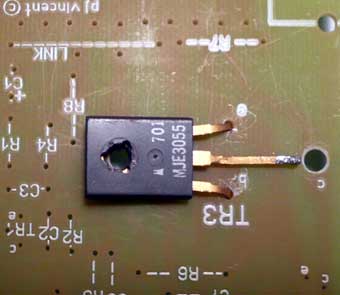[quote author="digichild"][quote author="ProfPep"]
By the way: before for any authenticity fetishist says "it's not a 3055", I might point out that 60% of what is labelled 3055 isn't either, unless you buy from a major company. Most 3055's are regarded as 'generic NPN power' and sourced from production drop outs of higher rated devices. The flat pack ones at least come from a major maker, and will have the correct semiconductor die inside the package. At this power level, heat transfer is not going to be an issue, (the flat pack ones have a slightly lower max power dissipation).
[EDIT] Doing some 3055 checking reveals that quite a few bigger makes may be 'selects' too. One Motorola data sheet quoted Ft anywhere from 0.6 MHz to 6MHz. Typical should be 2MHz, looking back at an old original RCA data book. Flat pack 3055's all seem to have a lower max current of around 10A, as opposed to 15 in the T03, (due to package limitations). Not really relevant here - the die is theoretically the same.
I think the flying heat sink method is the easiest. A Hint: when bending the pins, hold the pin next to the case with your needle nosed pliers to avoid cracking the seal. Another option is to solder some wire on to go down the holes and trim the pins to clear the board.[/quote]
the transistor gets pretty hot - is it really safe to use the like this?
or should i concider a heatsink :?:
nice idea by the way to use mje3055 :grin:[/quote]
I just showed it that way for speed - I definitely would use a twisted tab heatsink.
BTW - there seem to be both variants of the pinouts on flat pack 3055's. I would use the Motorola, for authenticity. I found some others in the bits box that were pinned ECB, and some BCE. Collector is always the middle pin, but it's worth checking the other two. Both types will fit. I've been away from the boards for a while, (work got 'untidy'), but I'll put up some test jigged pics when I get a moment.
Best wishes


































